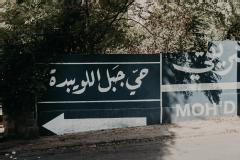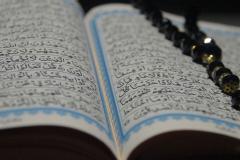Arabic calligraphy is the artistic practice of handwriting and calligraphy based on the Arabic alphabet. It is known in Arabic as khatt (Arabic: خط), derived from the word 'line', 'design', or 'construction'.[1][2] Kufic is the oldest form of the Arabic script.
From an artistic point of view, Arabic calligraphy has been known and appreciated for its diversity and great potential for development. In fact, it has been linked in the Arabic civilization to various fields such as religion, art, architecture, education and craftsmanship, which in return have played an important role in its advancement.[3]
Although most Islamic calligraphy is in Arabic and most Arabic calligraphy is Islamic, the two are not identical. Coptic or other Christian manuscripts in Arabic, for example, have made use of calligraphy. Likewise, there is Islamic calligraphy in Persian or the historic Ottoman language.
The two most popular scripts used for Arabic calligraphy are Kufic and Naskh. Kūfic was derived from Iraq and initially used for inscription on stone and metal. Naskhī originated from Mecca and Medina. The script is used as a cursive script, for example on papyrus and paper.








